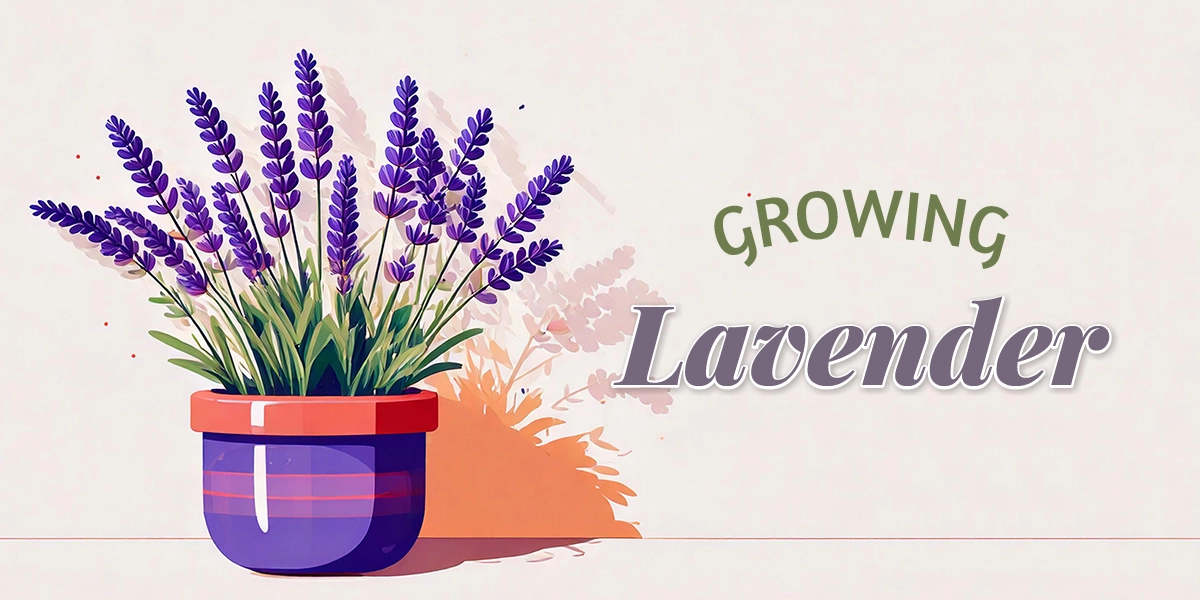Such a versatile and useful plant!
- Lavender reduces stress and promotes relaxation in herbal remedies. It relieves headaches, insomnia, and minor burns or insect bites.
- Dried lavender flowers can add fragrance and a slightly sweet flavor to dishes, teas, and baked goods.
- Lavender’s soothing and anti-inflammatory properties make it a common ingredient in natural skincare products.
- In the garden, lavender attracts pollinators like bees and butterflies while repelling pests.
- It pairs beautifully with roses, peonies, and daisies, adding texture and a pleasant scent to cut flower arrangements.
- Dried lavender sachets can freshen up closets or drawers and repel moths.
Lavender has long been cultivated for its aroma, vibrant blooms, and therapeutic applications.
The ancient Egyptians used lavender for perfumes and embalming. Europeans later incorporated it into medicine and cosmetics. Today, lavender remains an enduring symbol of health and tranquility.
Native to the arid hills of the Mediterranean, lavender is well suited for Southern California’s mild, dry climate. And in the right conditions, it grows equally well indoors.
Choosing the Right Lavender Variety
There are over 40 varieties of lavender, each with unique characteristics and growing requirements. Here are some popular choices for home gardens:
- English Lavender (Lavandula angustifolia): The most commonly grown variety, known for its intense fragrance and compact growth habit.
- French Lavender (Lavandula dentata): Recognizable by its serrated leaves, it has a milder scent but produces abundant blooms in shades of purple.
- Spanish Lavender (Lavandula stoechas): With its distinctive “rabbit ear” bracts, this variety lends whimsy to a garden and is especially adapted to hot and dry climates.
- Lavandin (Lavandula x intermedia): A hybrid between English and Spike lavender, lavandin offers larger flower spikes and a stronger scent, making it popular for commercial cultivation.
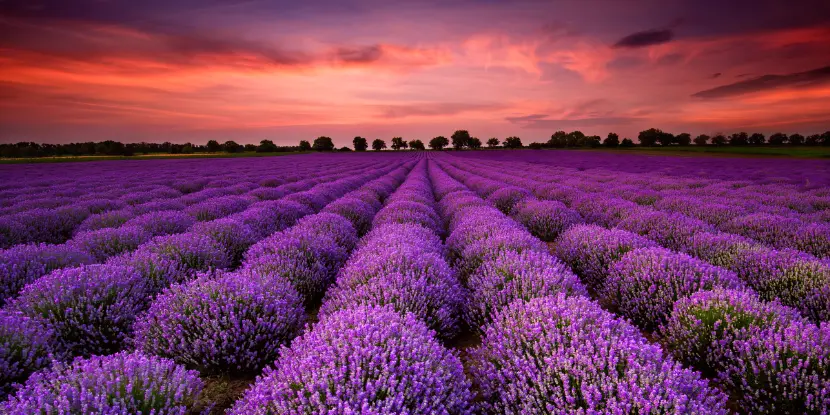
Commercially grown lavender plants.
Ideal Growing Conditions
Lavender is a perennial plant, meaning it will return year after year when grown in the appropriate conditions. Most lavender varieties thrive in USDA Hardiness Zones 5 through 9, though some types, such as English Lavender, are more cold-hardy, while others, like French or Spanish Lavender, prefer warmer climates.
Light
- Lavender thrives in full sunlight.
- Outdoors, this means 6–8 hours of direct sunlight daily.
- If you’re growing lavender indoors, place it near a south-facing window for maximum light exposure or supplement sunlight with grow lamps.
Temperature
- Lavender prefers warm temperatures between 65-80°F.
- During the winter, it can tolerate cooler temperatures down to 40°F but may need protection from frost.
- If growing indoors, maintain a temperature of around 60–75°F during the day. Avoid placing the plant near drafts, radiators, or air conditioning vents.
Soil
- Lavender requires well-draining soil with a slightly alkaline pH (6.5–8.0).
- A mix of sandy and loamy soil with good drainage is ideal.
- Add perlite or sand to improve drainage if your soil is heavy or clay-like.
- For indoor plants, choose a potting mix with perlite.
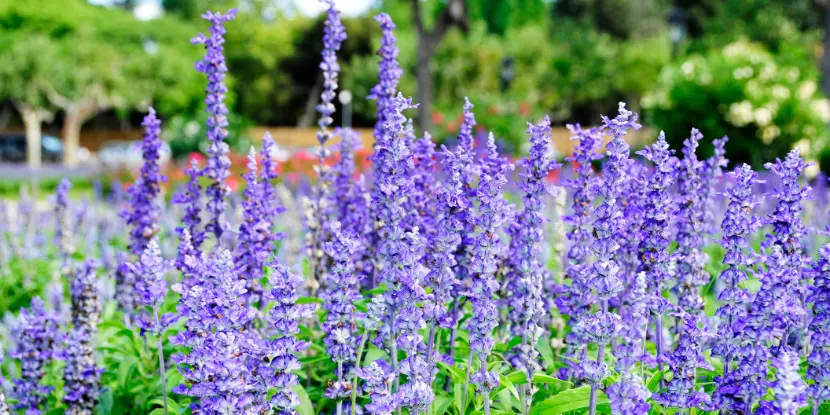
A lavender patch in the garden.
Propagating Lavender
- From Seeds: Start seeds indoors 10–12 weeks before the last frost. Transplant once the seedlings are sturdy.
- From Cuttings: Take softwood cuttings from existing lavender plants in spring. Dip the cuttings into rooting hormone and plant them in moist soil.
Preparing the Garden
- Pick a spot with abundant sunlight and good air circulation.
- Loosen the soil with a garden fork.
- Mix in sand or gravel to improve drainage if the soil is heavy or clay-like.
Planting Lavender
- Space lavender plants 12–18 inches apart to give them room to grow, especially if planting multiple varieties.
- Dig a hole deep enough to accommodate the root ball without burying the plant’s base.
- Place your lavender plant in the hole. Fill the hole with soil, gently patting it down.
- Water lightly to settle the roots.
- Add a thin layer of mulch (like gravel or light straw) to prevent weeds while allowing air to flow through the soil.
Growing Lavender in Pots
- Choose a pot with good drainage and at least 12 inches in diameter.
- Fill it with well-draining soil, leaving about an inch of space at the top for watering.
- Place your lavender plant in the center of the pot.
- Water until the soil drains from the bottom holes.
- Rotate the pot weekly to ensure all sides of the plant receive sunlight.
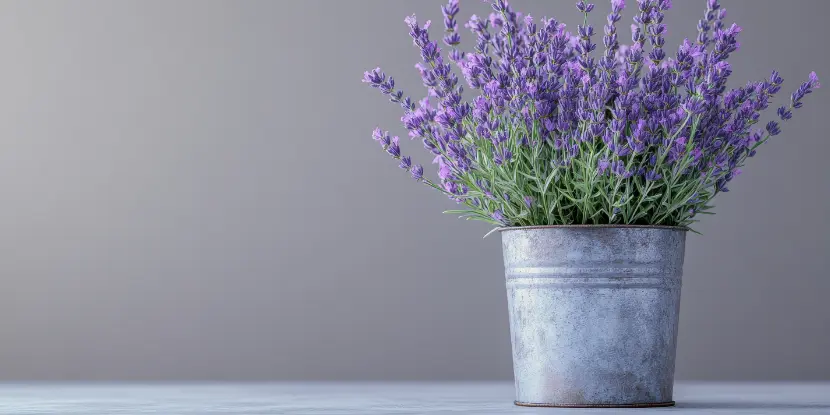
Lavender does well as an indoor plant under the right conditions.
Lavender Plant Care
Water
Lavender prefers infrequent, deep watering. Allow the soil to dry out completely between watering sessions.
- Indoors: Water every 1–2 weeks, depending on the humidity.
- Outdoors: Once established, lavender is drought-tolerant and requires minimal watering.
Fertilizer
- Use a small amount of slow-release fertilizer at the start of the growing season.
- Avoid excessive fertilization, which can lead to leggy growth and weak plants.
Pruning
- Prune back the previous year’s growth by one-third in spring or early summer. This will encourage new growth and prevent the plant from becoming woody.
- Prune off any dead or diseased branches throughout the year.
- After flowering, cut off the spent blooms to encourage more flowers.
Pests & Diseases
Lavender is generally pest-resistant, but common problems include aphids, spider mites, and root rot caused by over-watering.
- Handpick pests or spray with a mild insecticidal soap.
- To prevent root rot, avoid over-watering and make sure the soil has good drainage.
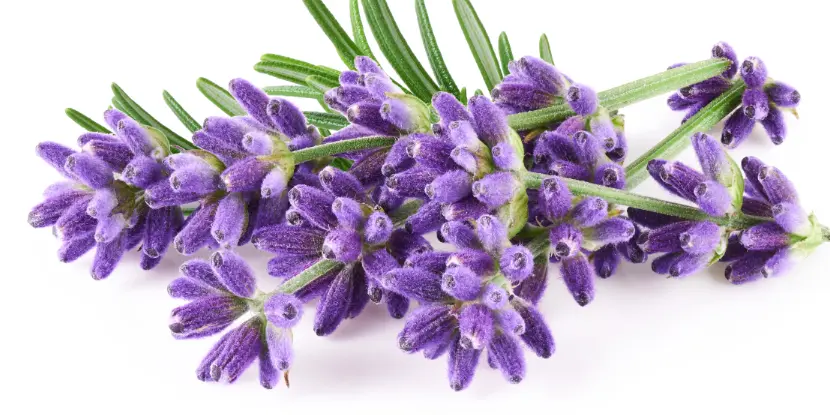
Close-up of lavender flowers.
Harvesting Lavender
- Once your lavender plant reaches maturity (usually around 2 years), you can start harvesting it.
- Harvest in the morning after the dew has dried, and avoid cutting during hot, sunny days.
- Harvest lavender flowers when freshly opened but not fully bloomed to maximize fragrance.
- Cut one-third of each stem, leaving at least two-thirds of the foliage intact to promote future growth.
- Dry lavender stems in a cool, dark location, away from direct sunlight.
- Once the stems are dry, remove the buds from the stems.
- Store the dried buds in an airtight container to preserve their fragrance and quality.
Additional Tips
- Avoid watering overhead, which can lead to fungal diseases.
- To promote a bushier growth habit, pinch off new buds until your plant is established.
- Lavender is a natural repellent for some garden pests like moths, fleas, and mosquitoes. Consider planting it near vulnerable plants or using it in homemade insect repellents.
Putting Lavender to Use
- Lavender adds color, texture, and fragrance to floral arrangements. Combine fresh or dried lavender with flowers like roses, peonies, or baby’s breath.
- Use dried lavender in potpourri, sachets, or wreaths.
- Lavender oil can be used in homemade candles and beauty products for a calming scent.
- Add dried lavender to baked goods or infuse it in honey or vinegar for a unique flavor profile.
- Steep dried lavender buds in hot water for a relaxing and aromatic tea.
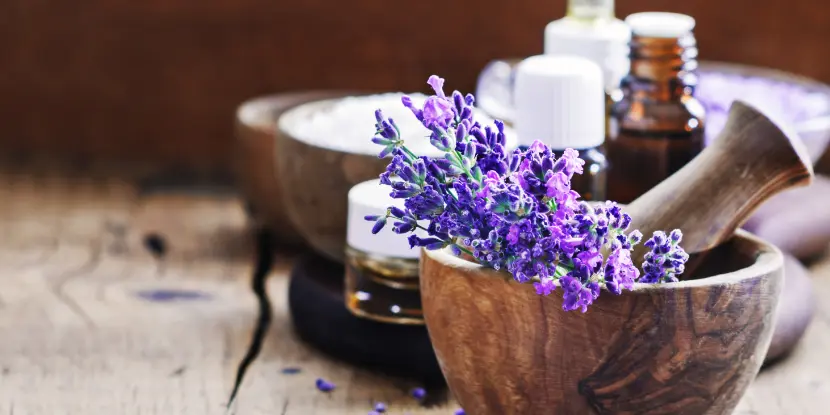
Lavender flowers being ground for a concoction.
FAQs: Growing Lavender
Q: How long does lavender take to grow?
Lavender typically takes 90–120 days to establish. Once mature, it regrows each year with minimal effort.
Q: Can I grow lavender indoors year-round?
With proper care — plenty of light, the correct temperature, and well-draining soil — lavender can thrive indoors regardless of the season.
Q: How do I prune my lavender plants?
Prune lavender in early spring before new growth appears. Remove about 1/3 of the plant to maintain its shape and encourage fuller growth.
Q: Why isn’t my lavender flowering?
Insufficient light, overwatering, or too much fertilizer can cause poor blooming. Adjust care routines accordingly to boost flowering.
Q: What’s the best time to plant lavender?
The best time to plant lavender is in the spring, after the last frost. This allows the plant to establish its roots before the heat of summer.
Q: How much sunlight does lavender need?
Lavender needs full sun to thrive, which means at least 6–8 hours of direct sunlight daily. Plants with insufficient light may grow leggy and produce fewer flowers.
Q: Can lavender survive cold winters?
Most lavender varieties are hardy in zones 5–9. However, in colder climates, consider protecting your plants with a layer of mulch or growing them in pots to bring indoors during the winter.
Q: How do I prevent lavender from getting woody?
Regular pruning is essential. Prune back one-third of the growth annually in the spring and cut back spent blooms after flowering to encourage fresh growth.

